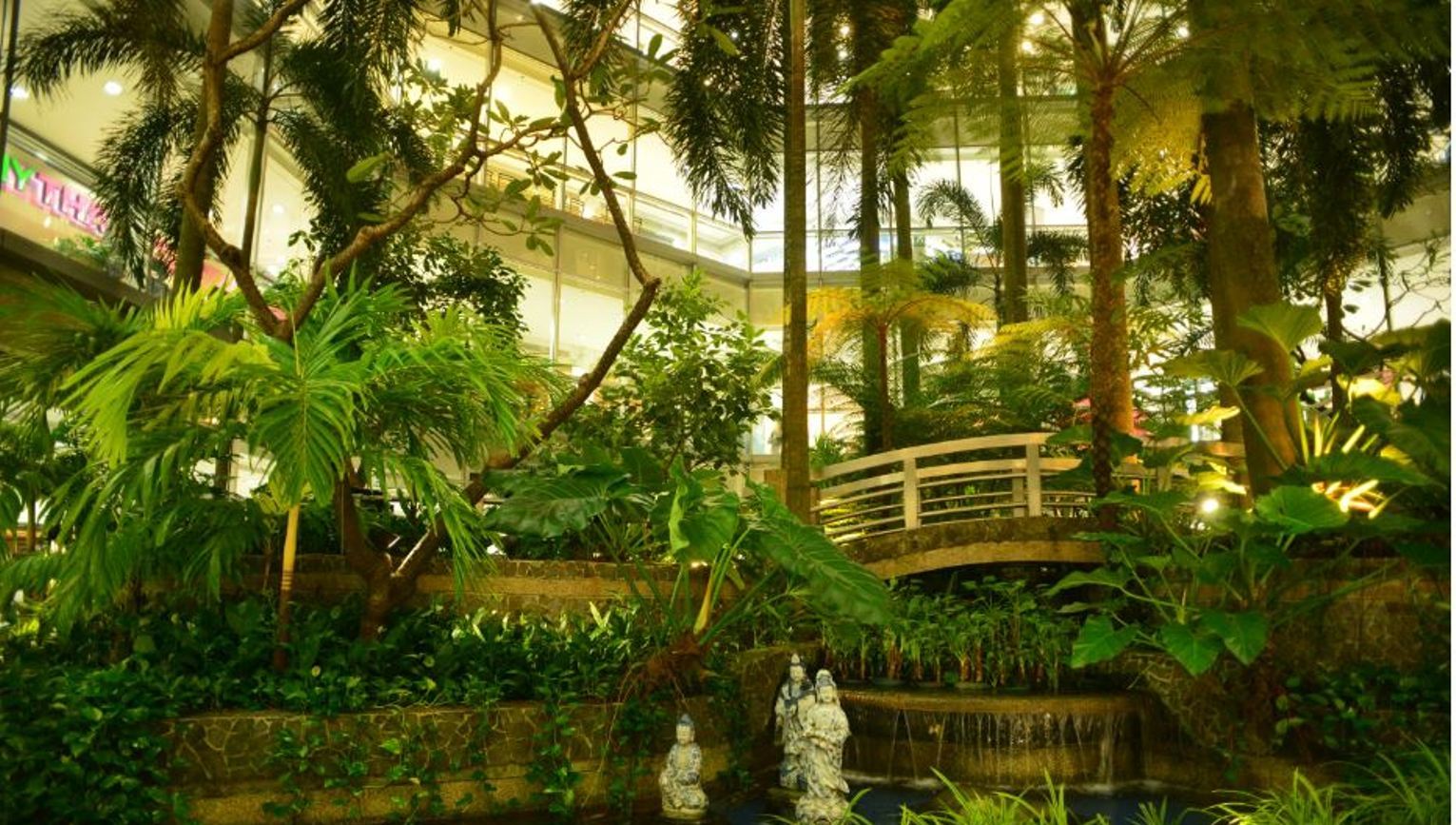Did you know that there are more than 200 species of plants — some of them we don’t expect to grow in the metropolis or even in the country — thriving in various parts of Araneta City?
According to Araneta Group’s Center maintenance team, which cultivates and manages plant life at the City of Firsts, these flora and conifers thrive in sidewalks and landscapes in Araneta City. Some may not notice the variety of these plants, but their existence has been vital to providing a healthy and clean environment for the public.
We asked Mr. Jimmy Tan, arborist of Araneta City, to identify some of the unusual trees and shrubs in the City. Here’s what we discovered:
King Ferns (Angiopteris evecta)
Thriving in Oasis Gateway Mall is a number of King Ferns that decorate the lush atmosphere of this refreshing al fresco spot.

King Ferns are giant rainforest ferns that can grow up to 1 m (3 ft 3 in) wide and up to 1.2 m (3 ft 11 in) high. These magnificent perennial ferns are native to South East Asia and Oceania. They can only grow on very rich soils, often of volcanic origin, and they prefer a very warm climate. These ferns also grow in river banks, gullies, and creeks where freshwater supply is abundant and water movement is constant.
The healthy existence of the King ferns means that the ambiance in Gateway Mall’s Oasis is comparable to a rainforest. Araneta City’s Center Maintenance maintains a sufficient water supply as well as provides a good drainage system to replicate its preferred habitat of these ferns.
Yellow Bauhinia (Bauhinia Tomentosa)
Passersby might get used to seeing green unassuming trees beside Ali Mall (along Gen. Romulo Avenue) which silently blooms pale yellow bell-shaped flowers from February to March. These are called Yellow Bauhinia.

The Yellow Bauhinia tree is native to India, Sri Lanka, and parts of tropical and Southern Africa. But breeders successfully established the tree in a wide variety of habitats such as disturbed sites, roadsides, coastal forests, riverine forests, and thickets
It has a number of medicinal uses, aptly for the treatment of pain, rheumatism, fever, ulcers, and cancerous growths in the stomach.
Tabebuia
Also known as Trumpet Trees, Tabebuia is a flowering tree native to South and Central America. It is known as a genus of flowering trees and large shrubs.

In Araneta City, a Yellow Tabebuia has been thriving near Shopwise Skybridge. It blooms golden-colored trumpet-shaped flowers that it was named after. Some variety of this tree has pink and purple blossoms.
Malabulak Tree or the Red Cotton
Often mistaken as the Fire Tree because of its similarly vibrant red flowers, the Malabulak has more compact blooms and is a proud native in the Philippines.

It grows in hot, dry river valleys, savannahs and usually thrives in humid lowland deciduous forests. It is commonly found in Nueva Ecija and in Southern Luzon but some can be found in Quezon City.
You can spot one between Cyberpark Tower 1 and Telus building.
Golden Penda (Xanthostemon Chrysanthus)
Endemic to North Eastern Queensland in Australia, a Golden Penda happens to be growing along the sidewalk of Telus Building across Parking Garage South.

Golden Penda was first described in 1864 by Victorian Government Botanist Ferdinand von Mueller as Metrosideros chrysantha until it was reclassified in the genus Xanthostemon by George Bentham. Its name is derived from the Ancient Greek words chrysos “golden”, and “anthos” “flower”.
Given the right temperature and soil composition, it blossoms with golden flowers.
Mickey Mouse bush (Ochna Serrulata)
A shrub indigenous to South Africa, the Ochna Serrulata blooms beautiful yellow flowers, and are known for its shiny black and berry-like fruits. These berries are suspended below bright-red sepals in a way that resembles the face of Mickey Mouse, hence the common name Mickey Mouse bush.

It helps in preserving wildlife in Araneta City as the sweet scent of its flowers attracts bees and butterflies, while the ripe berries serve as a relish to birds.
China Doll (Radermachera Sinica)
The Radermachera Sinica is native to subtropical regions of China, Taiwan, and other parts of Asia. It has a delicate appearance, with a slender stem and branches, and glossy green leaves.

It can reach up to 30 m tall but it has been marketed in its dwarf variation, the Asian Bell Tree. The Asian bell has been popular as an indoor plant due to its attractive glossy leaves.
Since its being commercialized as a dwarf plant, it’s uncommon to see the China Doll in its prime state hence the bloom of Araneta City’s Radermachera Sinica.




